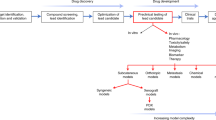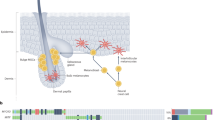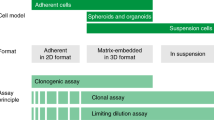Abstract
The characteristics of 7 human melanoma cell lines were compared with those of the xenografts from which they were established. The ultrastructure, melanin content, isozyme pattern and chromosome numbers of the cell lines were closely similar to those of the corresponding xenografts. The different cell lines gave rise to colonies in soft agar of size and morphology similar to the parent xenografts, and the plating efficiencies were clearly correlated. However, no correlation was found between the growth rates in vivo and either the doubling times and saturation densities in monolayer cultures or the plating efficiencies in soft agar. Moreover, one of the cell lines lost its tumorigenic ability upon establishment in culture. Thus, although the properties of the cell lines by and large reflected those of the parent xenografts, important inconsistencies were seen. The data emphasize that extrapolations from continuous cell lines in vitro to tumour cells in vivo are not necessarily valid. A high content of cellular fibronectin was correlated with a compact colony morphology in soft agar and rapid attachment and spreading on plastic. The growth rates and cellular morphology of the cell lines were strongly influenced by TPA, DMSO, retinoic acid and theophylline, but not by alpha-melanocyte-stimulating hormone. A murine cell line established from one of the xenografts grew in soft agar and produced sarcoma in mice. The malignant murine cells had arisen by transformation of murine stromal cells during the first subcultures in vitro, possibly caused by a factor produced by the human melanoma cells.
This is a preview of subscription content, access via your institution
Access options
Subscribe to this journal
Receive 24 print issues and online access
$259.00 per year
only $10.79 per issue
Buy this article
- Purchase on Springer Link
- Instant access to full article PDF
Prices may be subject to local taxes which are calculated during checkout
Similar content being viewed by others
Rights and permissions
About this article
Cite this article
Tveit, K., Pihl, A. Do cell lines in vitro reflect the properties of the tumours of origin? A study of lines derived from human melanoma xenografts. Br J Cancer 44, 775–786 (1981). https://doi.org/10.1038/bjc.1981.276
Issue Date:
DOI: https://doi.org/10.1038/bjc.1981.276
This article is cited by
-
Impact of baseline culture conditions of cancer organoids when determining therapeutic response and tumor heterogeneity
Scientific Reports (2022)
-
Pre-clinical modeling of cutaneous melanoma
Nature Communications (2020)
-
Human Colon Organoids and Other Laboratory Strategies to Enhance Patient Treatment Selection
Current Treatment Options in Oncology (2020)



